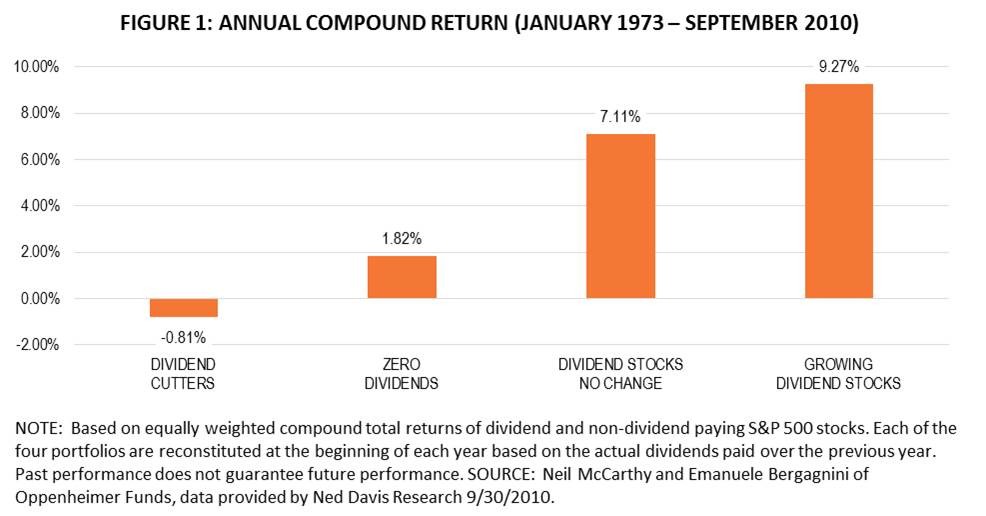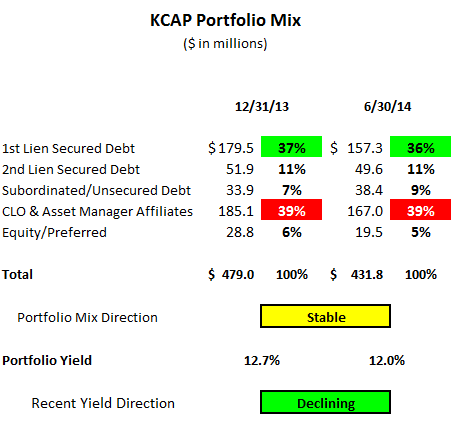Increase Yield Reduce Risk In Your Dividend Portfolio With These Securities
Post on: 16 Апрель, 2015 No Comment

I have spent the last couple of weeks building a comprehensive ETF database including funds that have exhibited performance in excess of 6-7 years, that is, those that originated in the pre-crisis euphoria. Essentially, I wanted to see assets that can be stress-tested and which performance I can monitor over at least one business cycle. Leveraged ETFs were excluded for one exception. The database now includes 250+ funds and can be used for constructing a wealth of customized portfolios in accordance with selected strategies.
What immediately caught my attention when joining Seeking Alpha is that a lot readers and contributors are pro-dividend investors: that is, they love the dividend streams and tend to prioritize them over expected capital gains. Inspired by this idea, I decided to construct a multi-asset low-variance portfolio with a relatively high dividend yield. From 8 asset classes (13 to be exact as I had to divide some of them into smaller groups) I chose 34 funds that had the highest dividend yields in their categories and showed a sufficient market history.
Asset Classes and Selected ETFs:
Currencies
It is the first time I considered this asset class as a means of diversification for a portfolio. The good part about them is that they serve hedges to classical asset classes and also pay modest dividends (the ETFs). I chose FXA. an ETF aimed at the Australian dollar. It pays a dividend of 1.97% and has a low beta of 0.62. Readers can check the chart and see that it currently trades slightly above 52 week low. That is, there is room for upside. This leads us to the bad quality of currencies: they do not tend to appreciate over long periods of time but trade in medium-term trends.
Alternatives
This asset class is not new in my portfolio construction principles. Managed High Yield Plus Fund Inc. (NYSE:HYF ), a closed-end fund, offers an 8%+ dividend yield, pays dividends on monthly basis (just as the previous investment vehicle), has a beta of 1.07, and has a positive covariance of 0.032 with the S&P. The fund is managed by UBS Global Asset Management.
Putnam Managed Municipal Income Trust (NYSE:PMM ) is a closed-end that seeks high current income exempt from federal taxes. It pays dividends monthly and offers a yield of 6.62% on an extremely low beta of 0.06. The covariance between the two funds stands low at 0.023.
Fixed-Income
This asset class is fundamental for a dividend-weight portfolio. Not only it offers income streams but also helps diversify an equity-biased portfolio. Besides, sovereign bonds (of the USA and other developed nations) tend to serve as a safe harbor during market turmoil. I have chosen seven fixed-income securities, half of which are sovereign-related bond funds. The rest are corporate/junk bond funds.
HYG. JNK. DHY. BLV are my choices for this segment of the portfolio. They are corporate bond funds invested in middle-to-low credit ratings and offer dividend yields from approximately 6% (HYG, JNK) to 9%+. BLV is higher quality mixed-type bond fund with a yield of 4.5% and a negative beta of -0.19.
TLO. TLT. PLW represent the other half of the fixed-income segment. They are sovereign securities funds with different durations: PLW is constructed as a series of 1yr to 30yr Treasuries, while TLT and TLO are long-to-medium-term US sovereign bond funds. The all have negative betas and share relatively low covariance among each other. Dividend yields are significantly lower that their corporate peers’ (at least 50% lower) but this is well compensated by much lower market risk (standard deviations of returns for sovereigns are typically 50% lower).
Commodities
Although a volatile class, it provides the necessary diversification for long-term investors. The security of choice is Barclays Bank PLC iPath Exchange Traded Notes due June 12, 2036 Linked to GSCI (NYSEARCA:GSP ). The notes offer a dividend yield of 2.82% and are linked to performance of S&P GSCI (formerly the Goldman Sachs Commodity Index). The Index is mostly exposed to energy markets: about 40% of dollar weights belong to crude oil, almost 15% to Brent Crude, another
20% to natural gas, heating oil, gas oil, and unleaded gas. The Notes are positively correlated with the market with a beta of 0.84.
Real Estate
Exposure to real estate is a necessary component of any investment portfolio. This asset class fares well during inflation, provides current income, and participates in the upside in the low interest rate environment. The two candidates are VNQ and REM. Vanguard REIT ETF and iShares Mortgage Real Estate Capped ETF. While the first one focuses on real brick and mortar, the second one works with the mortgage side of the business. The Vanguard ETF offers a yield of 4% with a beta of 1.21 and the Mortgage REIT gives a yield in excess of 14% (dividends paid quarterly for both ETFs) with a beta of 0.66. Both funds exhibit negative covariance with the sovereign bond funds which yields a decent diversification bonus to the portfolio.
Healthcare
Healthcare is also a new play in the portfolio. The industry did very well over the past 12-18 months, giving returns to investors in excess of S&P 500’s during 2013. The highest-yielding funds in the group were VHT. IHF. and XLV. Vanguard Healthcare ETF, Dow Jones US Healthcare ETF, and Health Care Select Sector SPDR Fund, respectively.
Healthcare industry is resilient to crises and is far from cyclical. This helps reduce volatility of portfolio returns throughout the business cycle. The healthcare funds have a small-to-negative covariance with long-term US bonds and have below market betas.
Financials
The Financials segment of the portfolio consists of a broad Financials ETF (NYSEARCA:VFH ), a private equity ETF (NYSEARCA:PSP ), and a mortgage trust (NYSE:BXMT ). All three ETFs, on average, move in opposite directions with sovereign bonds, that is, have negative covariance with them. PSP pays a dividend yield in low teens, BXMT offers 6 cents of dividends on a dollar invested, while VFH has the lowest yield of

1.8%. The three funds share one thing in common: their betas are much higher that the market (from 1.6 to 2.2).
Equity
This is the biggest segment in the portfolio by the number of securities selected. There are 15 ETFs in total in this array chosen from six different classes, including Large-Cap, Mega-Cap, Micro-Cap, Mid-Cap, Multi-Cap, and Small-Cap. The choices are: HGI. LVL. DTH. DGT. ADRE. IWC. DON. JKI. DIM. CVY. PEY. IWW, PGF. PFF. IJS. The Large Cap segment offers an average yield of
5%, Mega-Cap — around 2.5%, Micro-Cap — 1.3%, Mid-Cap and Multi-Cap- 2.3%, and Small-Cap gives around 5%, including two preferred shares funds.
Asset Allocation
Portfolios were constructed to minimize risk, maximize returns or maximize dividend yield. I constructed a covariance matrix in order to assess risk levels and manage to build customized portfolios with reduced systematic risk:
The output of the model is given below:
Notice that I have introduced a new metric: Diversification Ratio. In simple terms, the ratio shows how well a portfolio is diversified. The closer the value is to zero the more diversified the portfolio is. Readers can see that the best yielding portfolio has a healthy yield of 6.8% with an expected (historical) return of 6.3% (capital appreciation) and a risk of 15.4%. The beta is lower than the market. Its diversification ratio is second-lowest in the Returns Maximized table. Users may also compare this portfolio with the farthest to the right Risk Minimized portfolio. This option offers a dividend yield that is >250bp lower than the best dividend portfolio but significantly lowers risk (by almost 4% (!)) at a comparable expected return on capital. Another interesting option is Long Only Risk Minimized Portfolio, which has a higher expected return than risk and offers a decent dividend yield of almost 5%.
Risk/Return Profile
One can see that funds offering high dividend yields tend to be more optimized than the broader index: they either carry much less market risk at smaller returns or compensate well for extra risk taken.
Disclosure: I have no positions in any stocks mentioned, and no plans to initiate any positions within the next 72 hours. I wrote this article myself, and it expresses my own opinions. I am not receiving compensation for it (other than from Seeking Alpha). I have no business relationship with any company whose stock is mentioned in this article.














